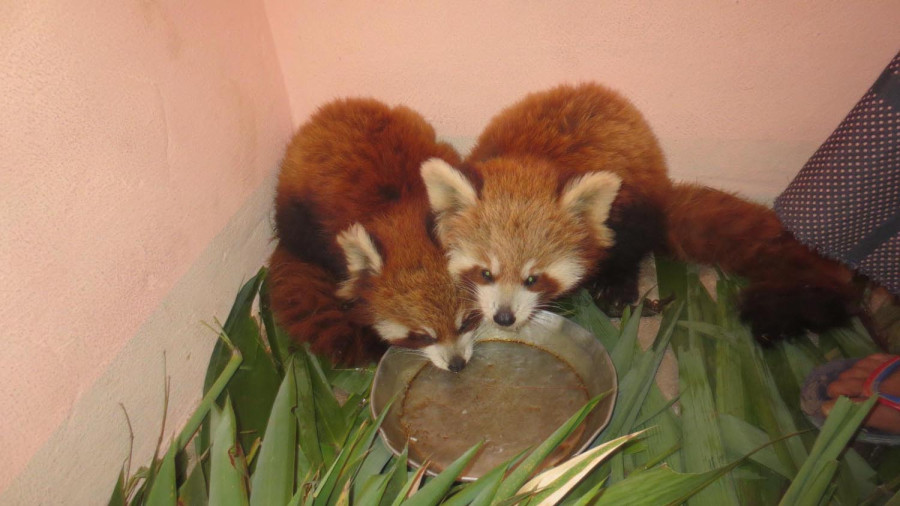Lumbini Province
Two local units in Rolpa make policies for red panda conservation
The estimated number of red pandas—known as Habre in Nepali—is fewer than 10,000 in the world, with around 1,000 of them located in Nepal.
Kashiram Dangi
Sunchhahari and Thabang Rural Municipalities, two local units in Rolpa district, have formulated new policies and programmes to conserve the endangered red panda. As red pandas are commonly seen in these areas, people’s representatives have formulated the plans to save the endangered species.
Along with the red panda conservation policies, the local units have started campaigns at the local level to preserve biodiversity and wild animals in all of the wards. Aash Bahadur Pun Magar, chairman of Sunchhahari Rural Municipality, said, “We plan to conserve biodiversity in all wards and have allocated necessary budget for the conservation programmes.”
According to Bagabir Gharti, a local of Sunachhahari village, two red pandas were found in the village three years ago. He said, “Locals had rescued them and the then-District Forest Office had handed over the red pandas to the Central Zoo in Kathmandu.” According to the villagers, red panda’s habitat, faeces and playground are found in the forest areas in these local units; however, authorities have not conducted a census survey to determine its population.
To make sure their conservation efforts are foolproof, Dadhiram Kandel, division forest officer in Rolpa, said they have started to train local residents to conserve biodiversity. “It’s important to protect the habitat of the red panda. We have started programmes to plant bamboos, construct ponds and maintain ecology,” said Kandel.
The Red Panda Network has also been running community-based red panda conservation programme in Sunchhahari and Thabang villages. Teman Gharti, ward chairman of Sunchhahari Ward No. 3, said, “We have started campaigns in the local level to aware people. Locals are also motivated to conserve endangered species.”
Red panda, known as Habre in Nepali, is one of the rare animal species inhabiting the temperate forests with an abundance of bamboo in Nepal, India, Bhutan, northern Myanmar and southwestern China. The estimated number of red pandas is less than 10,000 in the world, with around 1,000 of them in Nepal.
According to conservationists, unsustainable construction of roads that pass through red panda habitats, deforestation, forest fires, poaching, attack from predators, along with the loss of food sources are major challenges facing red panda conservation.




 15.12°C Kathmandu
15.12°C Kathmandu










